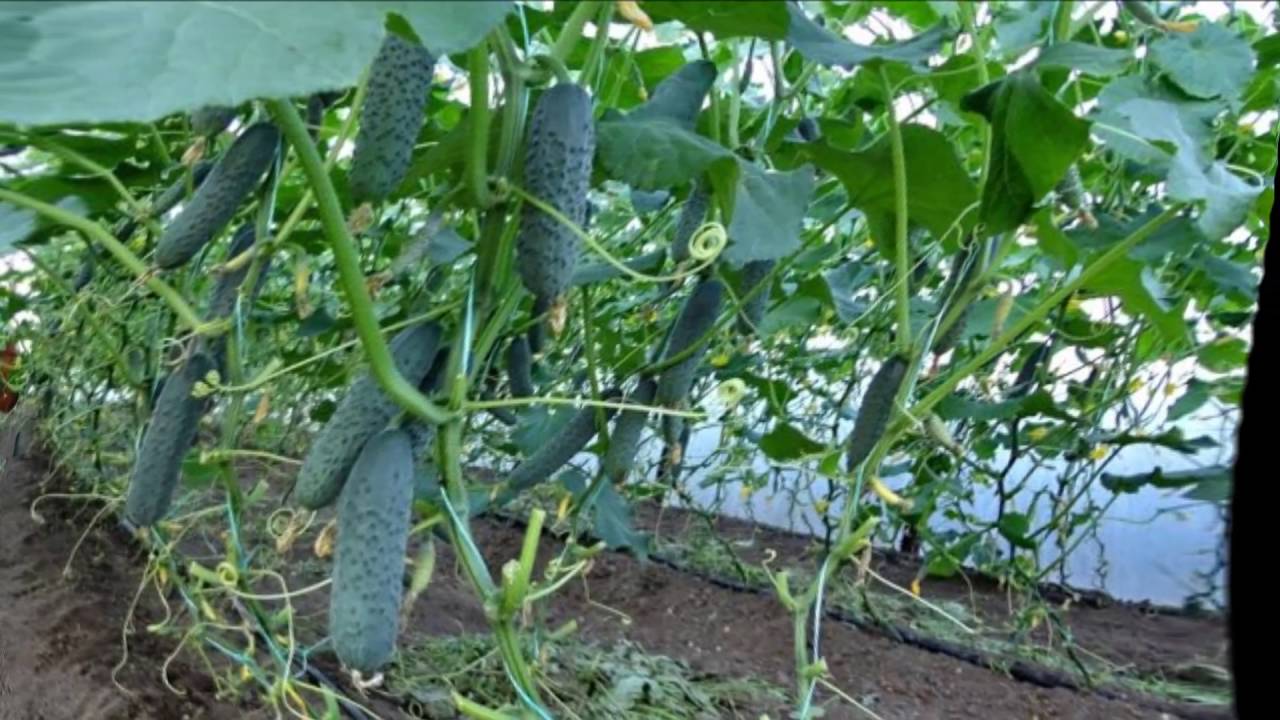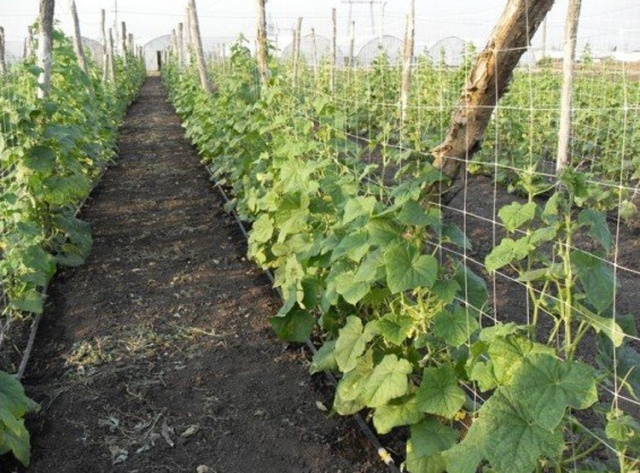Cucumbers have long occupied a place of honor on the tables and in banks of residents of all latitudes of our country. This culture is very capricious; when growing a cucumber on a closed ground, you will have to face a number of problems. The article will help novice summer residents and will be of interest to experienced gardeners.
Description
Parthenocarpic (not requiring pollination) varieties have no seeds. All other greenhouse breeds are self-pollinated. Both those and others are bred for cultivation in closed greenhouses.
Polycarbonate greenhouses provide protection from the outside world and heat, in return they take away some of the sunlight and the ability to pollinate the crop with insects.
The best varieties of cucumbers for the greenhouse (self-pollinated) for the Moscow region are F1 series hybrids. Cucumbers of this series are available for salad, canning and universal. Universal show themselves perfectly when salted, and when fresh they are devoid of bitterness.
Qualities worth paying attention to
- Early maturity. Extra early (full ripening of fruits on 46 - 51 days after planting grain in the ground), early (ripening on 50 - 52 days), middle term (52 - 57), late ripening (more than 57 from planting grain in the ground) are distinguished.
- Disease resistance (disease of one plant inside a greenhouse threatens an epidemic)
- Sun dependence (all varieties for greenhouses of the F1 series do not require a lot of light)
All hybrids have high yielding qualities - 12-14 kilograms of harvest can be harvested from one bush.
In a polycarbonate greenhouse, the vertical cultivation method is used to obtain maximum results, by hanging the sprouts on a trellis. The root systems will not compete if you place each seedling in a separate box measuring 60/40 and 20-25 cm high.
Chernozem is ideal for growing cucumber, gray soil and chestnut soil also favor a high yield. To retain moisture in the soil, you can knead perlite or sprinkle sawdust on top.
Saltpeter is necessary to form the mass of the bush. Nitrogen, nitroammofoska help to form the ovaries and increase the size of the greens. At the same time, fertilizers in excess concentration can quickly destroy the shoot and make the soil unsuitable for use. The indoor temperature should be between 22 - 24 C.
High-yielding cucumber varieties:
- Courage - 22-25 kg. Fruit length 10 - 14 cm. The variety copes well with leaf anthracosis and fusarium wilt. Fruits after 52 days. Salad variety.
- Cellar - 15-17 kg. The fruit is of the gherkin type, less than 10 cm in length, not prone to diseases. Harvest after 49 days. Salting.
- Moscow greenhouse - 14-15 kg. from a bush, fruit length 30-40 cm. Resistant to all diseases, the first zelents after 75 days. Universal.
- Emelya - 13-16 kg. Fruit up to 15 cm. Especially resistant to root rot. Harvest after 43 days. Universal.
- April - up to 15 kg. The fruits are large, over 20 cm. In addition to immunity to diseases, it has a high threshold of frost resistance. Cucumbers after 42 days. Universal.
- Zozulya - 12-13 kg. The size of the cucumbers is 15-20 cm.Maturation after 48 days. Resistant to all types of diseases. Universal.
- Kosinsky - up to 15 kg. Fruits are 10 cm in size. Fruits ripen on 58-60 days. Salad.
The choice of varieties of cucumber for open ground for the Moscow region is wide. All of the above varieties are suitable for this.
The least whimsical varieties are April, Emelya and Pogrebok. They are resistant to all types of diseases, and April is very early and tolerates low temperatures well. These varieties are planted in spring and early summer.
It is more convenient to plant the seeds in separate peat pots, to a depth of no more than one centimeter. So that the seedlings do not stretch, but form ovaries, the first week does not need to raise the temperature above 18 C. During this period, it is necessary to introduce root formation stimulants. 10 days after that - saltpeter in the proportion of a tablespoon to 10 liters of water. Saltpeter in a concentrated form is found in organic fertilizers, but there is a risk of burning the crop with them.
The best choice of organic matter for a novice summer resident is cow dung.
The shoots are treated with the means for the formation of ovaries, spraying them over the sheet.
Side branches (stepchildren) inhibit the development of the bush and require removal. The earlier the stepchildren are removed, the less painful the plant tolerates.
Diseases
Over-watering can cause root rot and white rot. Stale waterlogged air in the greenhouse threatens fungal diseases (Copperhead, Powdery mildew, Downy mildew, cladosporium disease). Any medicine from the fungicide series will help to cope with this problem.
There are many lovers to enjoy the watery culture. Spider mites, thrips, aphids, greenhouse whitefly, slug, Colorado potato beetle, worms serve as causative agents of viral diseases (cucumber mosaic, olive spot) and damage the plant's body. Now the choice of pesticides is wide. They are also used for prevention.
You cannot mix solutions yourself or use containers that have not been washed after the previous series of poisons. It is undesirable to treat the greenhouse with poisons more often than once every 10 - 14 days. It is unacceptable to carry out processing two weeks before harvest.
People have been growing cucumbers for more than 500 years, during this period they have studied all the nuances of the variety. Aprelsky, Zozulya and Emelya are the best open field cucumbers for the Moscow region. By following simple rules, you can harvest a hefty crop.















